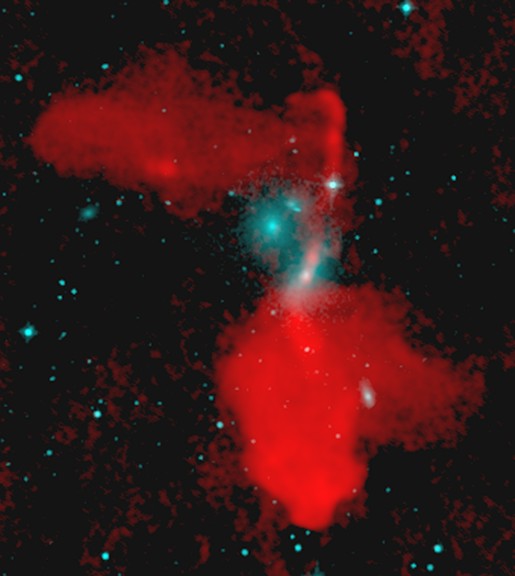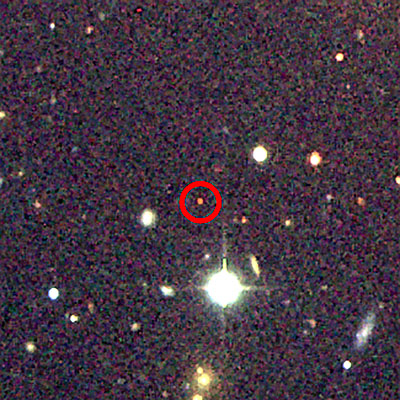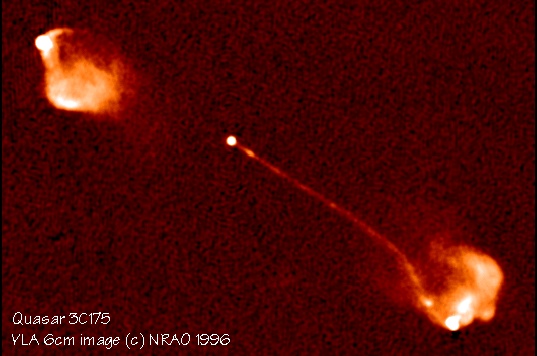|
It's the Astronomy Online non-Blog, or un-Blog.
Everyone has a blog now and since I am no follower of trends, I decided to merge the blog with the website. And I don't want to neglect the website in favor of posting on the blog.
These are the pages that were on the blog of old:
- Home
- Archive (Index of Pages)
- Me
- Current Trends
- Links
- Soho Live
Links:
Google Maps - Mars
Google Maps - Moon
HiRISE
HiRISE - MRO Imaging
Mac Singularity
Meade4M
Slackerpedia Galactica
Software for the Mac
Starry Night Online
Venus Maps
More Favorites:


































Thank you for visiting!
|
|
 |
|
The Justification:
When a project is planned, it generally requires a justification. For school, its to satisfy a grade requirement but for a real-life project, it is usually done to justify reasons for a grant, telescope time or both.
“Optically Identifying 20 cm Radio Sources”
1. Introduction
Radio surveys give us a very unique view of the Universe. By studying radio emission, we learn a great deal about line emission, thermal and non-thermal processes such as HI emission, Compton scattering, synchrotron radiation, cool sources and background radiation. While the list to examine can be long, optically identifying the source of a particular radio emission will allow the observer to determine what type of process is occurring. For this project, I will examine a variety of 20 cm radio sources, optically identify them and determine the process of emission through research.
2. Background
Radio Astronomy gives us a very unique view of the Universe. Our atmosphere allows primarily optical and radio waves to pass through while blocking higher energy wavelengths. The radio window is the largest – allowing unblocked wavelengths from 10 millimeters to 10 meters with addition frequencies greater than 50 meters (Kitchin, 2002). Since Radio Astronomy’s accidental discovery in 1931, this technique has proven very useful in mapping the spiral structure of galaxies, discovering pulsars and quasars and detecting strong radio sources from active galaxies (Kutner, 2003).

While most of our Universe has been photographed and/or observed with optical techniques of cameras and telescopes, radio offers a unique perspective – all of which is invisible to the human eye. The results are data that offers explanations to some of the Universe’s most enigmatic objects. An example is this NRAO image of Radio Galaxy 3C433: This image is an overlay of the “boring” galaxy in the middle of the radio emission (in red). Radio sources such as this are examples of the supermassive black holes in the center of galaxies shooting jets of synchrotron radiation that impact with the interstellar medium – resulting in radio emissions (Burke and Graham-Smith, 2002).
Elliptical galaxies – like 3C433 – that emit synchrotron radiation are always categorized as radio galaxies (Sparke and Gallagher, 2000).
A quasar in another example of the benefits to radio observations:
 
The NRAO images above are of an optical counterpart (left) of a quasar’s radio emission (right). An optical image of a quasar looks just like a star while the radio image reveals so much more. Radio surveys in the 20 cm, such as the 3CR survey, provide the data to map radio galaxies and quasars by radio emission and redshift (Burke and Graham-Smith, 2002).
3. Methodology
The supervisor for this project will provide a list of various 20 cm sources. While radio spectrum is quite large, the sources at 20 cm will most likely be limited to active galaxies, radio galaxies, quasars and supernova remnants.
Using the provide list of objects, I will use the survey catalogs from the NRAO VLA Sky Survey and Faint Images of the Radio Sky at Twenty-Centimeters (FIRST). The catalogs will provide image data as well as coordinates of the objects. Using SIMBAD, TheSky Professional and the NASA/IPAC Extragalactic Database (NED), I will determine the location of the optical counterpart of the objects.
I have secured telescope time from Ron Wodaski – the Blackbird Observatory in New Mexico. Access to the telescope will be limited to weather and the bright Moon so images will be taken over the course of the next month and a half. The telescope includes:
- RC Optical Systems 20" Telescope
- Software Bisque Paramount ME
- SBIG STL-11000 CCD Camera
- LRGB Color Filters
- Software Bisque Browser Astronomy Software
The images will be processed using MaxIm DL, CCDSoft and Mira Pro for image reduction and analysis. Additional processing of “pretty pictures” will be provided by Adobe PhotoShop CS2 and a host of plug-in filters.In addition to image acquisition and reduction of optical counterparts, I will also acquire the radio images of the selected objects using the FIRST and VLA Sky Survey. I will use methods such as overlay, star matching and/or astrometry to determine the exact positions of the optical counterpart to the radio object (if possible). Using resources such as textbooks and Astrophysical Journals to gather data on analyzing the objects, I will determine the types of emission indicated by each of the objects.
Finally a poster will be created that will display the variety of 20 cm radio sources, their optical counterpart, and a description of the emission process.
4. Summary
By combing optical and radio data of astronomical sources, it is possible to categorize active galaxies and other objects emitting non-thermal radiation and see a variety of emission processes associated with an object. This project will demonstrate the dramatic difference between radio and optical wavelengths. While most objects will not benefit from a survey in radio and optical wavelengths, certain phenomenon require examination in both – as optical images of active objects will only reveal a very limited picture. By using available data from FIRST and the VLA Sky Survey as well as photography of the radio objects, it will be possible to determine the source of the radio object and determine the emission process.
5. Bibliography
Burke, Bernard F. and Francis Graham-Smith. An Introduction to radio Astronomy. Second Edition. Cambridge University Press, 2002.
Kitchin, C.R. Astrophysical Techniques. Third Edition. Institute of Physics Publishing, Bristol and Philadelphia. 2002.
Kutner, Marc L. Astronomy. A Physical Perspective. Second Edition. Cambridge University Press, 2003.
NASA/IPAC Extragalactic Database. Internet: http://nedwww.ipac.caltech.edu/
The NRAO VLA Sky Survey. Internet: http://www.cv.nrao.edu/nvss/
SIMBAD Astronomical Database. Internet: http://simbad.u-strasbg.fr/
Sparke, Linda S. and John S. Gallagher. Galaxies in the Universe. An Introduction. Cambridge University Press, 2000.
The VLA FIRST Survey. Internet: http://sundog.stsci.edu/
Wodaski, Ron. The New CCD Astronomy. New Astronomy Press, Duvall WA. 2002.
Next Post | Previous Post | Back to Top
|
|

